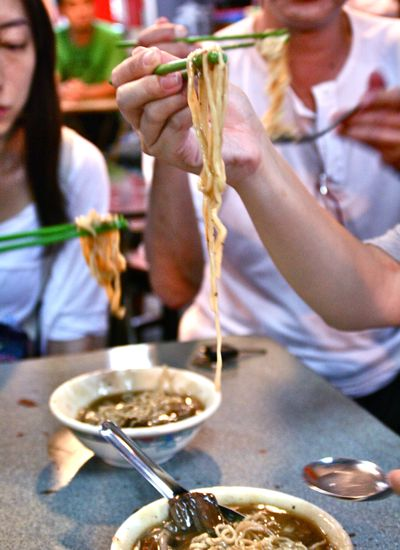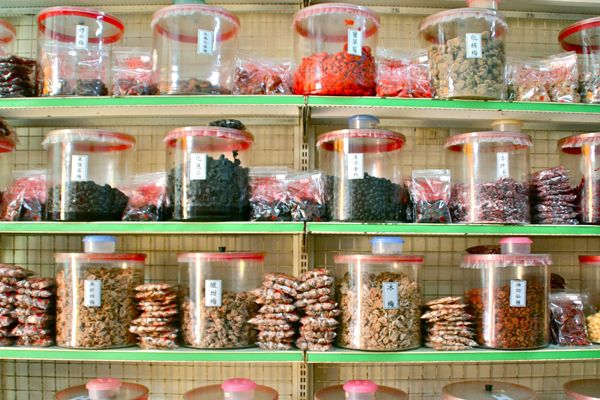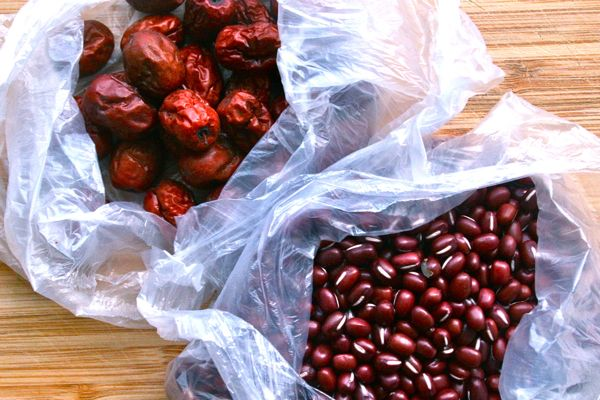Chinese New Year falls on Sunday, February 10 this year, when we kick off the year of the snake. Snake personalities are known to be acute, cunning, aware, proud, vain, and vicious at times. My mother was a snake, so besides the fact that my teenage years represented an era of nonstop nuclear warfare in our house, I appreciate this cycle of the Chinese Zodiac much more than most.
I’m ready to kick off this lunar year in DC right, then. There are certain foods one must eat during Chinese New Year to bring in luck for the home and the family, and to be frank, for oneself. And though the New Year is a one-day holiday, celebrations often extend for a week before and after – which means a lot of eating potential. While it seems like every single foodstuff has a corresponding symbolic meaning in the Chinese culture , I’ve selected a list of 8 the most symbolic foods to eat over the holiday, where to find some of their best iterations throughout the city, plus why exactly you’ll be eating them in the first place.
Noodles
We here in DC look to cities like LA and NY with ramen envy. So instead of that brothy, porky, noodly combo, let’s stretch our imaginations and parla Italiano for a second. Legend has it that Marco Polo brought the concept of spaghetti to Italy via China, so we’ll play that card here. DC has no shortage of Italian gems, but this year’s standout has got to be Fabio Trabocchi’s Fiola. If you haven’t heard of Fiola yet this year, you’ve got to be living in China or something.
Noodles are a symbol of longevity. The longer, the better. So order up some spaghetti, bucatini, or fettucine on Fiola’s menu, and leave that short stubby orecchiete stuff for another day.
Whole Fish
Thank you Chesapeake Bay, for your abundance of seafood. Thank you for your oysters, your crabs, your whiting and your hake. Thank you for providing the folks here in DC with an orchestra of tasty delights from your waters. Finally, thank you, Farmers Fishers Bakers, for opening this past year and bringing us the most sustainable of your daily catch.
In Chinese, the word for fish is a homanym for abundance, and symbolizes just that. Traditionally fish is served steamed, always whole – representing prosperity for the whole year, from head to tail.
Peaches
It’s winter. Where do you think you’re getting fresh peaches around here? Now’s the time to look for the little sugary fruits baked into pies! Dangerous Pies DC, with it’s rock star mentality and hand made pies, is serving up both sweet and savory desserts as a part of H Street’s growing food scene. If you can’t get out to H Street, don’t fret. – Dangerous Pies is now going mobile, bringing a bit more abundance of goodness to my stomach, and unfortunately, my thighs too.
Peaches are often brought as housewarming gifts, as ancestral offerings, or displayed in the home, symbolic of youth and eternal longevity. China is the number one producer of peaches in the world.
Dumplings
Mmmmm… little packets of meats and veggies wrapped in a thick fluffy dough. Hey now, we may be stretching our imaginations for a bit, but isn’t the empanada, like, the dumpling of South America? Check out DC empanada’s new outpost at Union Market, with a rotating menu ready to please all senses. Favorites include the WMD- Weapon of Mass Deliciousness (Chili and cheese), the The Badass (Buffalo chicken and blue cheese), and the Tio Shawn (black beans, rice, cheese, chipotle). Yes, that last one’s vegetarian, but yes, it’s tasty and a personal favorite.
Traditional dumplings resemble the ancient golden nuggets used as currency in medieval China, and are symbolic for wealth and prosperity. Mo’ dumplings mo’ money (I think this expression just might catch on).
Sweets
That Georgetown Cupcake line don’t lie, we Washingtonians need our sugar fix. Rather that a cupcake though, I’d rather indulge in the cupcake’s daintier little sister, the macaron. This French staple has officially arrived thanks to DC Patisserie. Indulgent enough to pass for a special-holiday treat, plus small enough to pop a few at a time, the macaron is the perfect sweet treat.
Sweet desserts for a sweet year. Though the Chinese don’t often have an abundance of sweets and desserts in their cuisine, the New Year is a time when they roll up their sleeves and pull a few tricks out from their sleeves. Tiny red-wrapper candies are passed out to kids, and cakes and tarts are baked for dinners and parties.
Tangerines and Oranges
To balance out your new diet of empanadas, pies, and macarons, maybe a little something fresh would be appropriate. Thankfully little clementines are the winter darling of the produce world. I’m always searching to get my hands on a little extra Vitamin C in the wintertime, and popping a few of these for an afternoon snack do just the trick. Korean grocer giant H-Mart carries these by the carton, and for cheap. That’s some good fortune for both you and your wallet.
In Chinese, the word tangerine sounds a lot like the word ‘luck’. Additionally, oranges represent abundance. So pairing a bowl of oranges along with tangerines, means you’ll have abundant luck. Even better, the more leaves that are on the tangerines the better – those symbolize life and longevity! You know, in case eating those noodles didn’t do the trick.
Nien Gao
A dessert with dates and beans? Hey, I warned you earlier, the Chinese don’t really do sweets and desserts. But actually the floating red dates and sweet red beans suspended in glutinous rice flour is actually…well, quite good. You know who does glutinous rice and sweet red bean paste better than the Chinese, though? The Japanese, and their mochi (though, I might be starting WWIII with this statement). Tiny little Hana Market, tucked on a corner of U street adjacent to a fire station, is one of the only authentic Asian markets in the district, and a good one at that. Stocked from floor to ceiling with hundreds of varieties of Japanese goods, you can find mochi in their refrigerated cases.
Nien Gao is another homonym for good luck – actually meaning “sticky cake”, it can also mean ‘high year’. All over china and beyond, Chinese eat this dessert for the new year to bring a tall order of good fortune in the new year. I personally eat it with high hopes that in the future, I won’t find the Chinese language so damn confusing.
Stir Fry with 10 Vegetables
Both my parents reminisce of their childhood New Year dinners, when there was always a big plate of 10-vegetable stir fry on the table. Every Year. My mom fondly recalls her father meticulously chopping vegetables the whole day into paper-thin slices, specifically for this dish. Traditionally made with ingredients such as pickled mustard greens, lotus root, fresh bamboo, bean sprouts, and shiitake mushrooms, it’s a light respite that is welcome during feasts of rich seafood and meat. For this one, I say visit a local DC farmers market to pick out the 10 best ingredients, and make your own seasonal, lucky stir fry. Onions, cabbage, parsnips, celery, tofu, bean sprouts, parsley, leeks, mushrooms, and carrots sounds like a great wintery combo to me. To the farmers market I go!
The number 10 represents completeness, and having 10 vegetables serves a purpose of being fulfilled in family and life. Plus this one hits close to home, which is good a reason as any to eat a dish.
So there you have it: Eight foods you should be eating these next few weeks, and where you’ll find their best versions in DC. And oh yeah, eight is very lucky in the Chinese culture, because it sounds like the Chinese word for “prosperity” or “wealth”. So yeah, it’s confirmed that we Chinese are pretty superstitious mofo’s looking for luck everywhere we can.









Your blog always makes me so hungry! Admittedly I am usually reading it around lunchtime but I don’t think that’s the reason. Oh, noodles. There are no good noodles in El Salvador (at least none that I have located yet).
Natasha recently posted..Wordless Wednesday: La Cancha
Haha thanks Natasha. Sending some noodle-y wishes your way!!
Jessie recently posted..Chinese New Year: A lesson on how to eat a year’s worth of luck